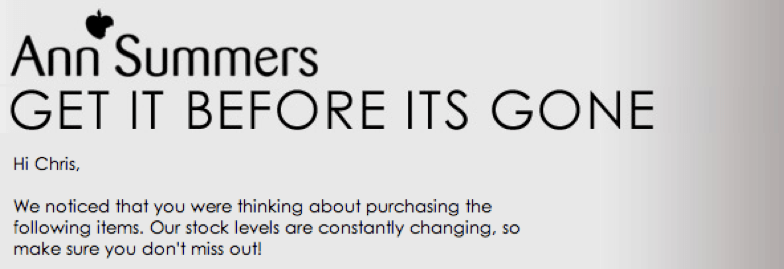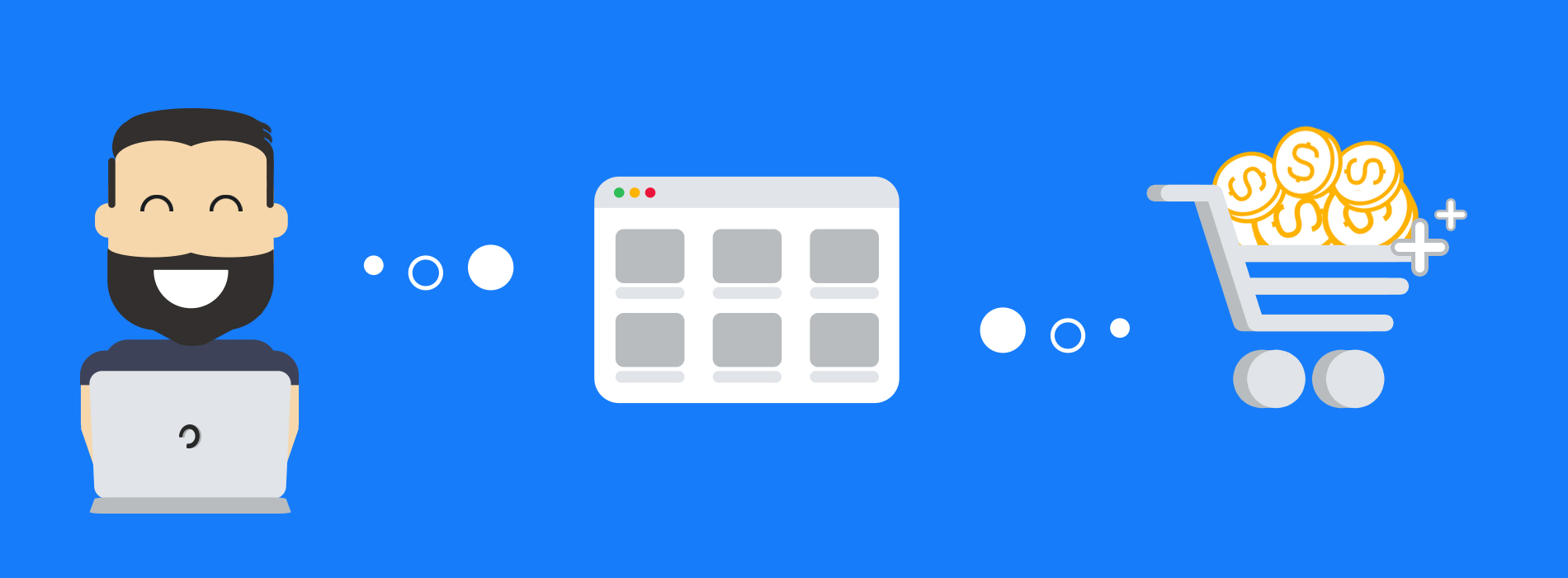Learning how to write an attention grabbing subject line can be challenging, but can mean the difference between visitors ignoring your emails, and converting to your site.
SaleCycle explores intelligent marketing through the use of impactful email subject lines to help you discover how to kickstart your ecommerce customer journey from their inbox into the checkout process.
What Is A subject Line?
Subject lines, in marketing and ecommerce terms, is the initial piece of short text that your consumers see when receiving your cart abandonment email. A subject line – in a small amount of words – should give a basic overview of what is contained within the email.
So with such a small amount of space to both provide information and persuade recipients to click, it’s important to grasp what a good subject line should include.
How Do Subject Lines Work?
Clicks (or opens) of your email will vary depending on the impact of your subject line. The aim is to make your subject line ‘clickable’ – which translates to an interesting, thought-provoking or personalised effect on your consumer base.
If your subject line fails to meet any of these crises, the receiver is more unlikely to convert to your site, or even ignore the email completely. It’s all about persuasion, and working alongside customer behaviour prediction methods.
How To Write A Subject Line
Writing an effective subject line depends on your brand and of course, your customer base – these two things need to be in sync in terms of knowing exactly what your customers want to see from your brand. Context is key, and these brand-focused subject lines should always be:
Specific – The message should be short, sweet and to the point. You want your consumers to be intrigued at first glance, after gaining an instantaneous understanding of what the rest of the email may contain.
Easy to understand – Remember, the subject line only gives brief context to what your email contains, so it’s important that the short amount of text makes sense. Avoid using vocabulary that is too complex or deviates from the main point you are trying to put across.
Create a reaction – Whether you want your consumers reaction to be surprised, intrigued, curious or delighted – a positive reaction should be the result of your subject line. You want them to follow through by clicking into your email, and then your site, so creating a positive subject line is key from the very beginning of their customer experience.
10 Subject Line Examples
There is a vast array of calls to action that can be used depending on your ecommerce site – whether that’s the action itself, and/ or how they are presented on the page.
Although there is no strict formula for a good subject line, it’s important to remember relevance to your brand (how it fits on the page), and what the end goal is for your business. You can test how well certain subject line formats work on your ecommerce site via the A/B testing strategy, or email testing, to let your consumers help you to gauge which versions work best.
But for now, here are 10 great examples of how top performing brands use subject lines for the best conversion rates and sales results.
1 ‘Just A Little Reminder’ – Selfridges


As used by… Selfridges
Here we can see that Selfridges has used customer service-style subject line to set a cart abandonment reminder. Looking deeper into the language used, they have chosen the words ‘’Just’’ and ‘’Little’’, for a more friendly and helpful approach, without losing the focus of the email – to remind the customer of the products left behind.
2 ‘We’ve Got Your Bag’ – Filson


As used by… Filson
Another example of choosing language wisely can be seen here with Filson. The word ‘’We’’ personalises the message, without losing the impact of the desired action – to get the visitor to return to their ‘’bag’’. The imagery used in the subject line compliments the message, and has stayed within the brand’s theme.
3 ‘Don’t Miss Out’ – TM Lewin


As used by… TM Lewin
This subject line may seem simple, however the focus of the message creates urgency and gives this a clear direction in what it recommends the customer do. This particular example is great for brands with limited stock levels and time-sensitive offers, to drive customers to buy within a limited time. Some sites specifically include a countdown marketing strategy in their sites following this incentive.
4 ‘Can We Help With Your Order’ – Cath Kidston


As used by… Cath Kidston
This is a customer service-led example from Cath Kidston, which is effective on a number of levels as it personifies the brand by using the word ‘’we’’, causing the customer to think about what they’ve left behind (‘’your order’’).
5 ‘Did You Forget Something’ – Matches


As used by… Matches
Opening with a rhetorical question is a great way to let the potential customer think about their next action, and is used well here by Matches. Handing over responsibility to the customer creates a sense of urgency, as mentioned before, without giving a direct instruction – which may be off putting.
6 ‘Wow You’ve Got Great Taste’ – La Senza


As used by… La Senza
This subject line uses a compliment – a very direct form of personalisation – to encourage more sales with La Senza. Flattery tends to work well in the beauty and fashion ecommerce sectors since the overall target audience aims to look or feel better when choosing brands. It’s all about knowing your consumers.
7 ‘Get It Before It’s Gone’ – Ann Summers
Much like the example from TM Lewis, Ann Summers targets the customers sense of urgency, here in this subject line. Emphasising that certain items are going to run out by mentioning stock level causes faster decisions and therefore, more sales.
8 ‘Don’t Worry We’ve Saved Your Basket’ – Sony


As used by… Sony
‘‘Don’t Worry’’ is a highly emotive opening to use for this subject line, but works well. The assumptive nature of the message makes customers feel that purchasing is just the obvious next step, and that the brand (Sony, in this case) has their back in providing a service for them in saving their basket.
9 ‘Too Good To Miss’ – Apex Hotels


As used by… Apex Hotels
Emotive language is a common theme in these examples, and Apex Hotels are following suit. Why would a customer miss out on a deal when it’s “Too Good To Miss’’?
Because Apex are offering their clients extra services and will go ‘’the extra mile’’, the consumers of this message are more likely to trust the business.
10 ‘Almost There’ – Zipcar


As used by… Zipcar
Humour is used here by Zipcar in this short – but sweet – CTA. We are getting more and more used to using technology on a daily basis, so why not incorporate some friendly or informal messaging to put your customers at ease. The phrase “Almost there!” also encourages the customer to make that next step, to secure a sale.
Speak to an expert
Learn how to convert your online audience into revenue with our experts.


Casey Turnbull
Casey is a Fashion Journalism graduate & ecommerce marketing executive at SaleCycle. Casey is committed to producing high quality content backed by in-depth research and data. She has experience developing content in a range of sectors including fashion, ecommerce and sports.
![Attention-Grabbing Subject Lines For Cart Abandonment Emails [With Real Examples]](https://www.salecycle.com/wp-content/uploads/2013/11/h-wide-attention-grabbing-headlines.jpg)









![Valentine’s Day Ecommerce Tips and Trends [2024 Strategy]](https://www.salecycle.com/wp-content/uploads/2019/01/valentines-ecommerce-1.png)



![How SaleCycle helped Vodafone increase their online sales by an additional 2,000 additional sales per month [Extended Version]](https://www.salecycle.com/wp-content/uploads/2023/08/vodafone-banner.webp)





